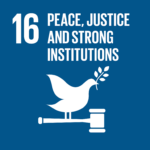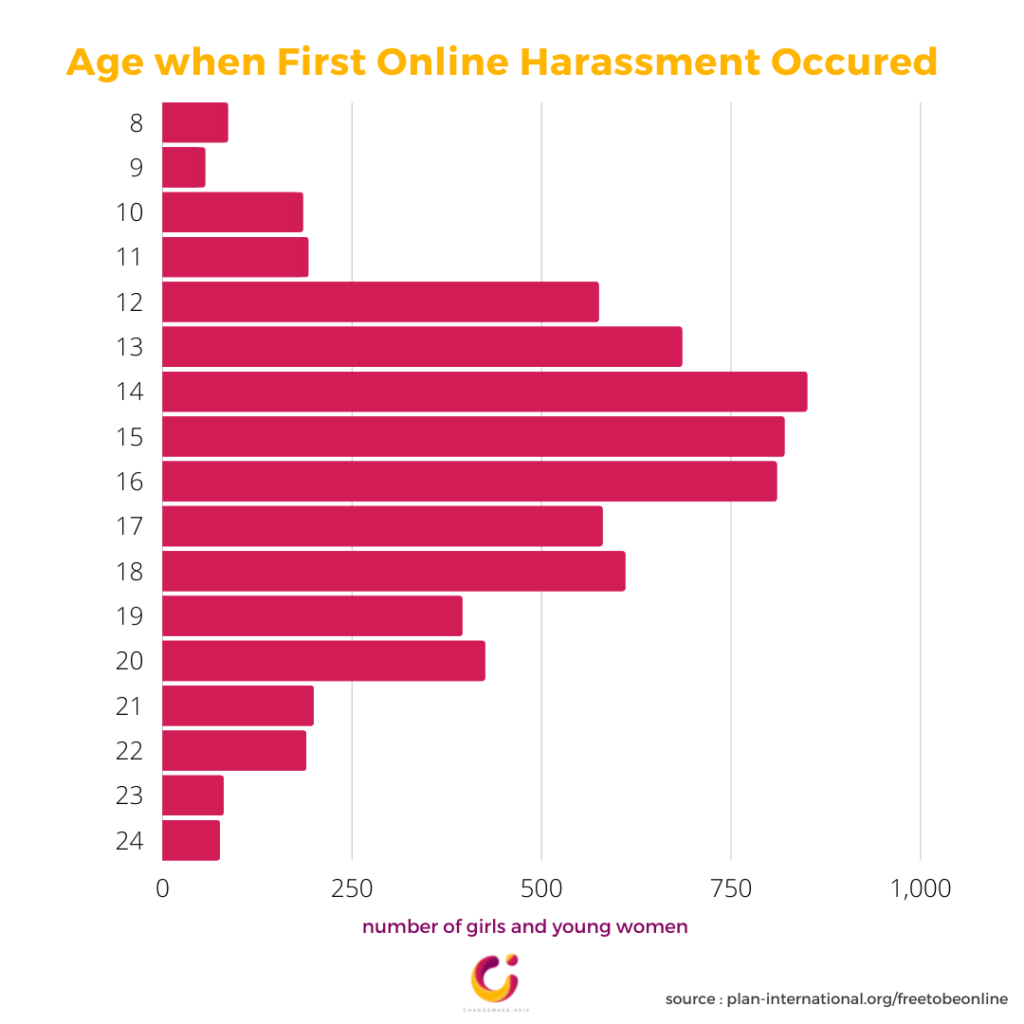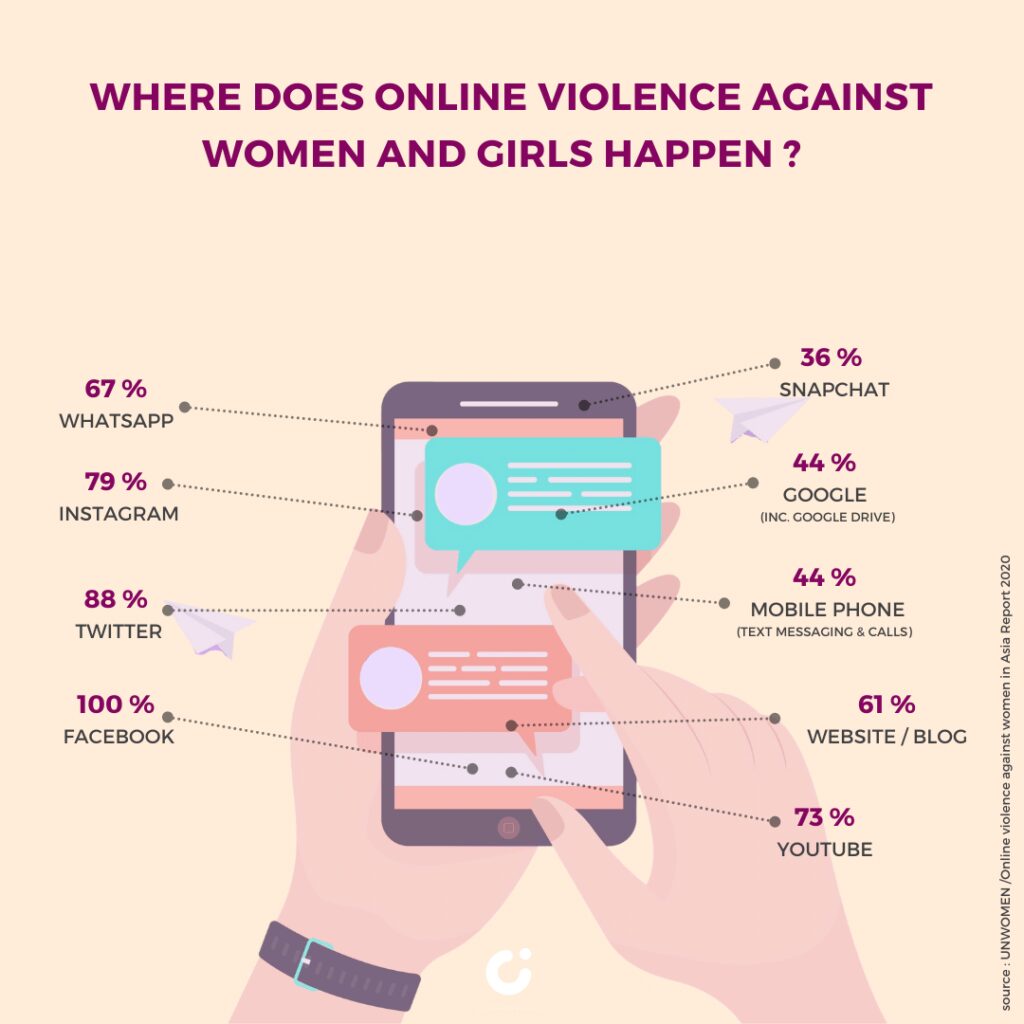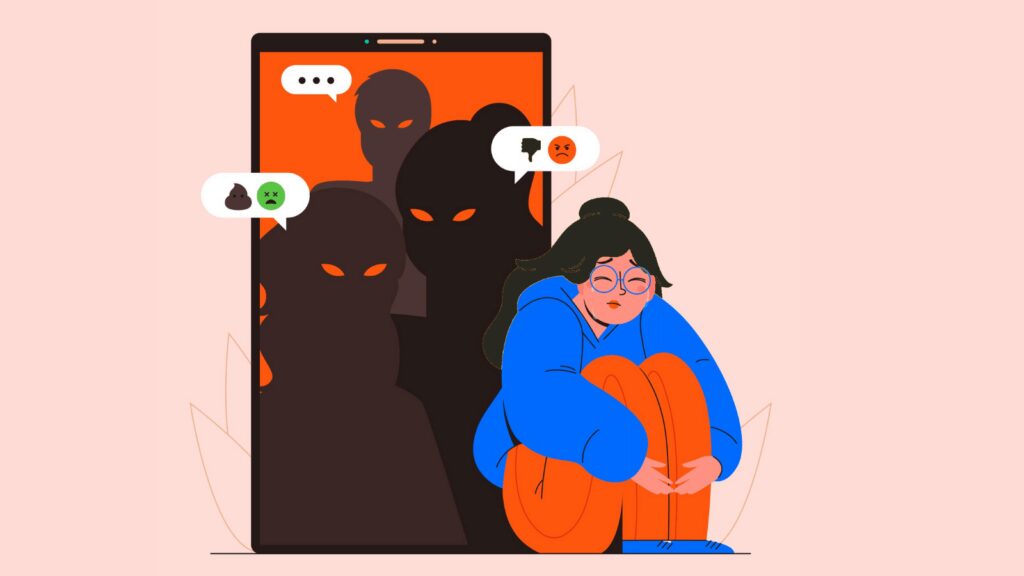Cyberbullying, cyber violence, online harassment … Digital spaces are disproportionately unsafe for women and girls.
There’s a pandemic of online violence against women and girls.
Pop culture has a bad habit of presenting stalking as normal dating behavior. Rom-coms and popular TV series feature lovable underdogs fumbling in their quest for love as they study their crush, join the same activities, ask around about them, and coordinate “coincidental” meetups. Through these unrealistic depictions of “love,” we are socialised to perceive these grand gestures as romantic.
Another scenario: A woman broke up with her boyfriend and just wanted to move on with her life. But her ex refused to let matters rest and set about harassing her with phone calls and text messages, even badgering her friends over the next few years. He also created multiple social media accounts to stalk her, keeping close tabs on everything she did, where she went, and who she was with. Photos that she posted on Facebook started circulating on other social media platforms among strangers.
As evidence of the human costs of the pandemic gathers, it’s increasingly clear that women and girls are experiencing gender-based violence on a daily basis, and that goes for both real-life and online spaces.
RELEVANT SUSTAINABLE GOALS


The Web Is Too Often Not Safe for Women and Girls
Plan International, a humanitarian organization, conducted surveys based on internet experiences globally in 2020, hearing from 14,000 girls and young women from 31 countries.
According to the findings, 58 percent of respondents had encountered online harassment, with half reporting that they had received more abuse online than on the street. While the research emphasises that girls are targeted online just for being young and female. It goes on to say that it is even worse for women and girls who are politically active, handicapped, Black, or identify as LGBTQ+.
We believe that the internet is a public good and should be used, managed, and governed as such...for children, the internet is a means, a tool, a crosscutting mechanism to all the realisation of all other rights.
World Wide Web Foundation
Similarly in 2020, UN Women carried out multi country study, hearing from women and girls in five Asian countries, India, Malaysia, Pakistan, The Philippines, and the Republic of Korea. The study showed that much of the violence women experience offline is replicated online. So are the risk factors. Diverse groups of women suffer from multiple and intersecting forms of discrimination and inequalities, making them especially vulnerable to violence. Factors of vulnerability include age, ethnicity, poverty, class, sexual orientation, gender identity, disability, religion, indigeneity, nationality, immigration status, and urban and rural locations, among others.
Women with intersecting identities are easily targeted online, which may result in more severe consequences. Some groups, such as women human rights defenders; women in politics; journalists; women with disabilities; lesbian, bisexual or transgender women; and women from marginalised groups are frequent targets of online violence, which is used to silence them and “put them in their place”.

For many, online harassment that follows them into their homes, and invades their hearts and minds, is just as frightening, physically and emotionally, as street harassment.

Address online gender-based violence : The Role Of Tech Platform
The Covid-19 pandemic has shown that the web is not a luxury, but a critical lifeline. Any barriers that stop people using the web threatens to strip them of this lifeline. Tech companies must urgently step up to improve the safety of their platforms so that everyone can access the web’s benefits without fear. To do this, they must listen to those who have experienced violence on their platforms and learn from them.

Tech companies are obligated not only to protect people form harm arising from their operations, but most importantly, to change mindsets and modify behaviours both online and offline. To address mysogyny, hate and the toxic use of digital media. To reach out not only to women and girls but to all digital media users, including boys and men, to alter online behaviour, the Internet culture and harmful notions of masculinity.
Tech companies can also amplify their capabilities to counter-narrate (read : contest) gender-based hate speech happening on their platform. This can include providing guidance for safe bystander interventions and anti-violence narratives. The latter should not only address hate crimes, but also lawful hate speech based on gender. Bystander interventions or collective action can be harnessed online to empower victims/survivors to “fight back” and create communities of resistance.
The Free Speech Myth VS Protecting The Internet
While the promotion of digital security and safe attitudes online plays a huge role in prevention, online violence against women and girls tends tone trivialised, particularly when it doesn’t involve immediate physical violence.
To advise women and girls are advised to block or mute harassing images and messages is to ignore the associated psychological trauma they may suffer. The physical sexual and economic harms of online violence also unfold over time.
Above all, there is a critical need to address misogyny, hate and the toxic use of digital media. Prevention strategies must aim to change mindsets and modify behaviours both online and offline. This requires reaching out not only to womenand girls but to all digital media users, including boys and men, to alter online behaviour, the Internet culture and harmful notions of masculinity.
Freedom of speech is frequently quoted as an overriding consideration in terms of how the web and social media platforms are regulated. Often nobody will take responsibility for the misinformation, abuse, or harassment which is part of the online environment. Perpetrators who would be subject to laws offline carry on with impunity, and frequently an empowering anonymity, online.
Freedom can be complicated: whose rights are being prioritised and whose voices are silenced? A system that was designed for us all, to connect us, and provide us with information is in danger of becoming a platform for the already powerful and a force which in the words of the founder of the World Wide Web is “anti-human”
All in all, violence against women is a huge threat to progress on gender equality. And unless we make sure the web is safe for women and girls, our digital technology will be one more way that women are attacked, suppressed, and marginalized rather than be the platform for voice, opportunity, and positive change that we know it could be. That’s why companies and governments must work closely with women’s activists and the wider civic tech community to tackle violence online and make the web safe and empowering for everyone.
You may also be interested in :
Know Anyone Undergo Gender-Based Violence ? 3 Ways You Can Be An Ally


